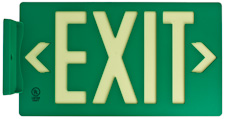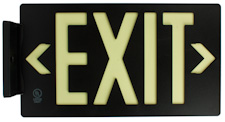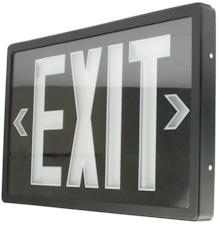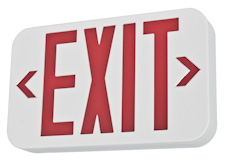As the recent tragedy at the Kiss Nightclub in Santa Maria, Brazil demonstrates, public fire safety continues to remain a serious problem. Any time you mix large crowds of semi-intoxicated people with low levels of lighting, minimal exits, and add smoke and fire, the result is always tragic.
In North America there have been several notable nightclub fires:
- Beverly Hills Supper Club Fire – May 28, 1977 – 165 Dead
- Blue Bird Cafe Nightclub Fire – September 1, 1972 – Montreal, Canada – 37 Dead
- Cocoanut Grove Fire – November 28, 1942 – Boston, Massachusetts – 492 Dead
- Happy Land Social Club Fire – March 25, 1990 – New York City, New York – 87 Dead
- Rhythm Nightclub Fire – April 23, 1940 – Natchez, Mississippi – 209 Dead
- Station Nightclub Fire – February 20, 2003 – 100 Dead
*Learn more about historical fires in the United States in our State by State Fire FAQs.
After fire analysis has repeatedly noted the importance of well-lit and uncluttered exit pathways, and show that the majority of deaths are usually due to smoke inhalation or trampling. Victims could have survived if they had been able to quickly and safely exit the structure.
The Exit Light Company reminds everyone that the sole purpose for the products that we sell (exit signs and emergency lights) is to save lives, not property. Here are some helpful tips for both patrons and business owners:
If you are a Patron:
- Use common sense, don’t patronize businesses in buildings that do not look safe. Some warning signs are that the building does not have a sprinkler system, exit signs or emergency lights are broken and non-functional, or if you see that most of the exit doors are blocked or even locked (chained shut)
- Be aware of the location of at least two exits at all times (the first being the one that you entered through)
- Never drink so much that you will not be able to react to an emergency situation
- If you are caught up in a crowd, it doesn’t matter if you are large and strong, try to get to a wall or to the edge of the crowd. Many deaths are dues to trample injuries
- Try to stay low, to minimize smoke inhalation
- If possible, cover your nose and mouth with a cloth. Use your shirt, jacket, or a napkin, if available. If you can, wet the cloth with water. Never use alcohol to wet the cloth, as alcohol is highly flammable
- Don’t worry about your stuff (purse, backpack, etc.). It’s replaceable, you’re not
- If you are in a group, agree on an assembly point, somewhere you can all get to safely, then don’t worry too much about keeping together
- Move safely, and try not to trample/push others, but leave as quickly as possible
- Stay as calm as possible, and do not give in to panic. This is easier said than done, but panicking will not help you survive
If you are a Business Owner/Facilities Manager:
- Keep exits and exit paths clear of clutter
- ALL doors should open outwards so that the crush of a crowd can not pin the doors closed
- Install and maintain exit signs and exit pathway markings so that the direction of egress is readily apparent
- Install and maintain emergency lighting so that in the event of loss of power, there will be visibility
- Keep all emergency equipment (including exit doors) in good working order and test them regularly
*Find out more about maintenance & testing in our helpful FAQs.
Unfortunately, the Kiss Nightclub Fire will not be the last club fire, but if we all keep in mind the above safety tips, we can make sure that we do not contribute to another tragic event or do not end up as another sad statistic.

 While all fire exit signs are required to be illuminated, not all models require electricity. UL 924 listed fire exit signs are available in AC powered, non-electric self luminous Tritium or photoluminescent models all of which are compliant for use in the United States and Canada.
While all fire exit signs are required to be illuminated, not all models require electricity. UL 924 listed fire exit signs are available in AC powered, non-electric self luminous Tritium or photoluminescent models all of which are compliant for use in the United States and Canada. Photoluminescent signs, often referred to as “glow-in-the-dark” signs, absorb and store energy from normal ambient light, then release this energy in the form of a visible glow when the lights go out. Photoluminescent products automatically recharge once the lights are turned on, requiring approximately 60 minutes of exposure to 5 foot-candles or 54 LUX of natural light‡, fluorescent, metal halide or mercury vapor light.
Photoluminescent signs, often referred to as “glow-in-the-dark” signs, absorb and store energy from normal ambient light, then release this energy in the form of a visible glow when the lights go out. Photoluminescent products automatically recharge once the lights are turned on, requiring approximately 60 minutes of exposure to 5 foot-candles or 54 LUX of natural light‡, fluorescent, metal halide or mercury vapor light.  Self-luminous EXIT signs containing the radioactive gas tritium are widely used in a variety of facilities across the United States, such as public and private office buildings, theaters, stores, schools and churches – anywhere the public needs a rapid exit path. Those who possess tritium EXIT signs are general licensees of the Nuclear Regulatory Commission or an Agreement State, and are subject to certain reporting and handling requirements, including proper disposal of unwanted or unused signs. Tritium EXIT signs pose little or no threat to public health and safety and do not constitute a security risk.” —
Self-luminous EXIT signs containing the radioactive gas tritium are widely used in a variety of facilities across the United States, such as public and private office buildings, theaters, stores, schools and churches – anywhere the public needs a rapid exit path. Those who possess tritium EXIT signs are general licensees of the Nuclear Regulatory Commission or an Agreement State, and are subject to certain reporting and handling requirements, including proper disposal of unwanted or unused signs. Tritium EXIT signs pose little or no threat to public health and safety and do not constitute a security risk.” —  The real function of
The real function of